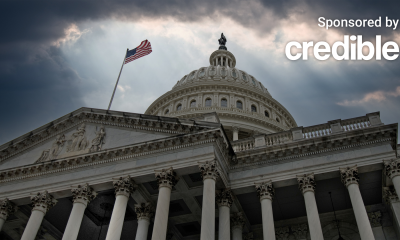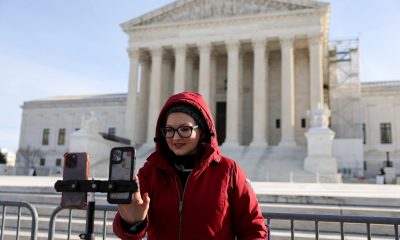Personal Finance
Close to 190 banks could face Silicon Valley Bank’s fate, according to a new study

On the heels of Silicon Valley Bank’s collapse earlier this month, 186 more banks are at risk of failure even if only half of their depositors decide to withdraw their funds, a new study has found.
That is because the Federal Reserve’s aggressive interest rate hikes to tamp down inflation have eroded the value of bank assets such as government bonds and mortgage-backed securities.
“The recent declines in bank asset values very significantly increased the fragility of the U.S. banking system to uninsured depositor runs,” economists wrote in a recent paper published on the Social Science Research Network.
SVB: Silicon Valley Bank collapse explained in graphics
GRAPHICS: Ripple effect: How Silicon Valley Bank collapse is affecting other US banks
A run on these banks could pose potential risk to even insured depositors — those with $250,000 or less in the bank — as the FDIC’s deposit insurance fund starts incurring losses, the economists wrote.
Of course, this scenario will only play out of if the government does nothing.
“So, our calculations suggest these banks are certainly at a potential risk of a run, absent other government intervention or recapitalization,” the economists wrote.
How did Silicon Valley Bank collapse?
In the case of the Santa Clara-based Silicon Valley Bank, which held most of its assets in U.S. government bonds, the market value of its bonds went down when interest rates started going up.
That’s because most bonds pay a fixed interest rate that becomes more attractive if interest rates fall, driving up demand and the price of the bond.
However, when interest rates rise, the lower fixed interest rate paid by a bond is no longer attractive to investors.
The timing coincided with the financial difficulties many of the banks’ customers – largely tech start-ups – were dealing with, forcing them to withdraw their deposits.
In addition, Silicon Valley Bank had a disproportional share of uninsured funding, with only 1% of banks having higher uninsured leverage, the paper notes. “Combined, losses and uninsured leverage provide incentives for an SVB uninsured depositor run.”
Swapna Venugopal Ramaswamy is a housing and economy correspondent for USA TODAY. You can follow her on Twitter @SwapnaVenugopal and sign up for our Daily Money newsletter here.
This article originally appeared on USA TODAY: After SVB collapse, almost 190 new banks could fail, says new study
Read the full article here

-

 Side Hustles7 days ago
Side Hustles7 days agoWhy the Best CEOs Think Like Anthropologists
-

 Side Hustles5 days ago
Side Hustles5 days agoThis User-Friendly H&R Block Software Package is Only $40, While Supplies Last
-

 Investing5 days ago
Investing5 days agoTikTok faces US ban deadline as users brace for fallout By Reuters
-

 Passive Income4 days ago
Passive Income4 days agoTrain for a New Tech Career in 2025 With This $25 Course Bundle
-

 Personal Finance6 days ago
Personal Finance6 days agoDecember inflation clouds Fed's outlook on interest rate cuts
-

 Personal Finance7 days ago
Personal Finance7 days agoCalifornia's homeowners insurance industry faces rough road ahead as wildfires continue
-

 Investing7 days ago
Investing7 days agoWhy Not Owning Bitcoin is Making You Poor
-

 Side Hustles6 days ago
Side Hustles6 days agoSupreme Court TikTok Ban: What to Know, January 19 Deadline


















